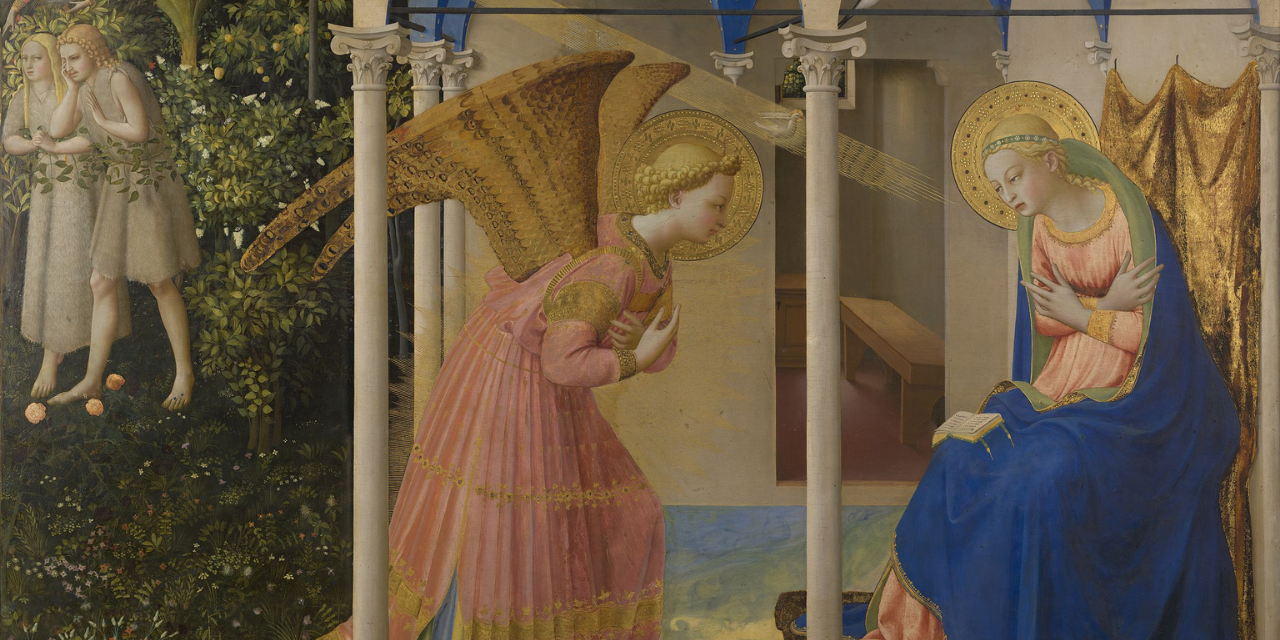If you were asked, “Where was the world-shaking gospel first revealed?” what would you say?
It is not a simple answer, but it is a very important one for all who take God’s story seriously.
Yes, the gospel was revealed long ago in the words of the Old Testament prophets. Yet not clearly, because too many Jews still miss it. But neither was it first spoken by Jesus, his cousin John the Baptist out at the Jordon, or by the Apostles on their missionary travels.
It was technically spoken by the angel Gabriel to a young middle-eastern girl who learned she was impossibly going to be with child even though a virgin. The scriptures tell us young Mary “was greatly troubled at the saying.”
She was told by Gabriel,
“And behold, you will conceive in your womb and bear a son, and you shall call his name Jesus.
He will be great and will be called the Son of the Most High…and of His Kingdom, there will be no end.”
Think about what this means in a genuinely and very real human drama.
Jesus, a man from the nowhere town of Nazareth, is the most consequential individual to ever be born. His teaching and followers across the globe would radically transform world culture, topple great powers without firing a shot, establish the world of humanitarianism, accessible medical care for commoners, develop the scientific method and enliven world-wide movements for justice, human dignity, and individual freedom. He would literally divide history, and be responsible for the founding of the largest, most diverse collection of people around a singular truth that would become Christendom. He would bring literal salvation to all of humankind.
And all this started in the very intimate parts of one woman. In her ears and in her womb.
Mary, by tradition, about 14 years old. The gospel is first spoken into her tiny ear. A girl’s ear. There are only three people who know of this greatest of all news at this point. News that the whole world would eventually hear. God, Gabriel and lovely Mary are the only ones who know. This is where the gospel started.
God entrusted His greatest project to a woman. In creation with Eve, and here at the launch of the Gospel.
And where is it that Jesus first appeared on earth?
Well the Christmas manger, of course, right? That is what our Christmas traditions and decorations tell us, but that is not what scripture says.
The gospel was first proclaimed in the ear of one special girl. Christ was manifest, physically, in her womb. The gospel started in the context of a complex family drama, for Mary was engaged to be married, but at this point unwed. It was a shameful and perplexing thing, but that is what God did in His perfect, loving will.
But there was a larger drama taking place in two wombs, at the moment Mary enters her relative Elizabeth’s home. Christ, in utero, is recognized, received, proclaimed, and worshiped, and Mary and Elizabeth are not the only ones involved in the divine drama here. We read in Luke 1:41-44…
And when Elizabeth heard the greeting of Mary, the baby leaped in her womb.
And Elizabeth was filled with the Holy Spirit, and she exclaimed with a loud cry, “Blessed are you among women, and blessed is the fruit of your womb! And why is this granted to me that the mother of my Lord should come to me?
For behold, when the sound of your greeting came to my ears, the baby in my womb leaped for joy.
Catch that last statement from Elizabeth: “The baby in my womb leaped for joy.”
This is a MAJOR event in Jesus’ story and thus the Christian Church, but we seldom appreciate it for what it actually is. It is the first time that Jesus is both proclaimed and worshiped as God! And this was done, we are told, “in a loud voice.” And Christ the Lord is worshiped by two people at the same time. One very old, one super young. And it happens with women in their wombs.
No one should miss what a profoundly pro-woman statement this is. Christianity is often derided for being anti-woman. Do these critics know anything of the Christian story? They do not. The most dramatic parts of Jesus story involve women. At His announcement. At His coming to earth. At His birth. At His first miracle. At His death. At His resurrection. In God’s orchestration, you cannot have the Gospel without women. They are a central and very intimate part of the story.
First to Proclaim Jesus’ Lordship
Elizabeth proclaims the blessedness of Jesus and His mother. Elizabeth is the first member of Christ’s church recognize and proclaim Jesus as her Lord. The simple but world-changing confession, “Jesus is Lord,” was the first and most basic way that Christians began to proclaim their faith and greet one another in the Church’s early years. It was the first Christian creed and Elizabeth was the first to proclaim it, long before Christmas morning. Think on that for a moment.
The second greeting is even more incredible and speaks to a very intimate relationship in the Savior’s life. Baby John leaps for joy, literally, at the coming of the Savior. He does so as a child in the darkness of his mother’s womb. (Yes, Christianity has profoundly strong words for the humanity and dignity of the unborn child in John and Jesus’ remarkable in utero contribution to the Good News.)
John did not start serving as the forerunner of Christ when preaching about His coming in the desert. It was here, in the womb. And it was two very common mothers, Elizabeth and Mary, who were the only ones able to experience this remarkable, history-changing event. It happened in the distinctly womanly interiors of their hearts and wombs in the humbleness of Elizabeth’s home.
This divine interchange between these two women in this domestic setting is unspeakably profound. And we typically move over it far too easily, wanting to get onto what we see as the center of the Christmas story, the manger. But this drama is also vitally important because it is the first revelation of Christ beyond Mary’s own heart and womb.
The Good News of God that has changed the world and the lives of untold numbers of people throughout history and into eternity started in the most intimate places of woman. That is what Christmas tells us.
Photo from The Public Domain.






